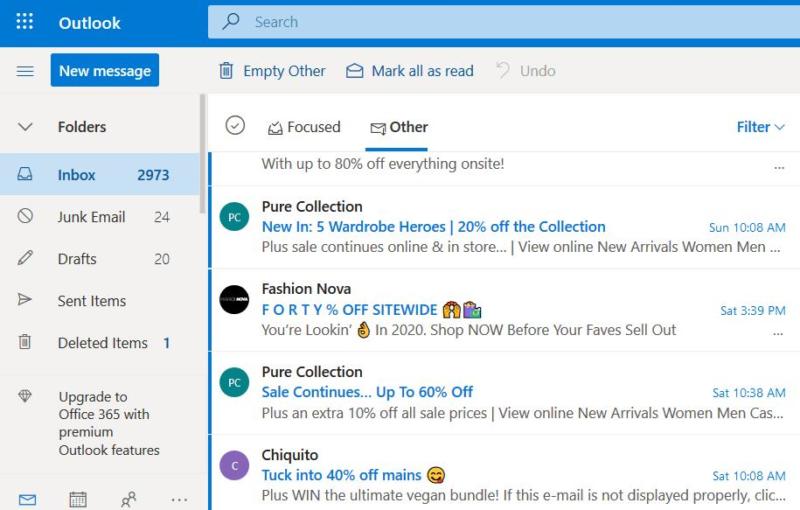- Feb 04, 2020
 0
0- by A2 Marketing Team
Finding the right balance when sending out marketing emails is a delicate dance. If you send them too frequently, you may lose subscribers, but the reverse is also true. So how do you know how often to communicate with your list, in order to get maximum engagement but prevent burnout?
Every situation is a little different, but you can plan out the optimal frequency for your campaigns with just a few steps. A set schedule that is based on averages, content, and consistency is key to seeing success with your email marketing.
In this article, we’ll take a look at the benefits of email marketing, and discuss how you can determine the best frequency to send emails for your campaign. Let’s get to work!
The Benefits of Email Marketing
As with most marketing, an email campaign promotes your services or products. However, it offers many advantages over a lot of the other popular options. It’s inexpensive, enables you to target key demographics, and is a great way to get your content shared.
As a direct form of marketing, a cultivated email list also can provide a solid Return on Investment (ROI). With so many benefits, it’s clear to see why it’s one of the most popular ways to spread brand awareness and stay in touch with customers.
If creating unique emails for each subscriber seems like a lot of work, don’t worry. There are plenty of tools that can help you automate much of the process, and even automatically personalize emails. Building an entire campaign requires more than just individually-effective messages, however – it also involves sending out emails at the right times and frequencies.
How Often Should You Reach Out to Your Email List? (4 Key Tips)
One question you may face as you start your first campaign is deciding how often you should reach out to your list. Since every market is different, there’s no one magic number. With that being said, there are several ways you can determine what frequency will be best for your business. Here are four key tips to get you started.
1. Don’t Send Too Often
It can be tempting to send emails multiple times a day, to try and maximize your ROI. Unfortunately, sending too frequently can overwhelm your subscribers, and even encourage them to unsubscribe.

In addition, if you’re always busy pumping out new emails, their quality could start to suffer. Sending out messages that don’t offer real value for your customers again increases the risk that you might lose them.
Instead, try to focus on quality over quantity. The more value you offer, often the more click-throughs you should see. To start, try sending emails once per week, and keep an eye on the levels of engagement you get, how many new subscribers you see, and so on. Then you can adjust your sending frequency as necessary.
As a general rule, it’s a good idea to send emails more frequently to those who actively engage with your content. When people become less responsive, you can send them fewer messages. This not only saves money and time, but you may win them back over. Fortunately, most email marketing tools let you achieve this by segmenting your list.
2. Know Your Industry’s Averages
Every industry has a different sweet spot when it comes to the frequency of sending emails. Knowing the average email marketing returns for your field or niche is important. When you fall below the normal range, it can be a hint that you may need to adjust your strategy.
For instance, the beauty industry sees an average 17% open rate, as well as a 1.76% Click-Through Rate (CTR). Consultancy firms average nearly 19% for their open rates, with a CTR of 2.15%. If your rates are less than the industry norms, something may be wrong, particularly if you’ve been growing your list and running campaigns for a while. At that point, you might want to rethink how often you’re sending out messages.
While you can certainly do your own analysis to find out your averages, understanding the industry standards is key. You can find those by downloading the yearly benchmark report created by SendGrid. It analyzes over 50 billion emails annually to find industry averages, so you know what numbers you’re aiming for.
3. Adjust Your Frequency Based on Total Content
Depending on your industry and the tools you use, you may end up sending multiple kinds of emails. For example, you might send out general marketing emails, messages spotlighting your blog updates and other content, and promotional emails about your latest offers.
When determining your sending frequency, it’s important to take all of this content into account, rather than approaching each type separately. Subscriber burnout is a real issue, and you don’t want customers to feel like you’re bombarding their inboxes.
With that in mind, it’s a good idea to combine content where you can, to avoid overwhelming subscribers. Your marketing email could lead with your best daily offers, for example, and end with a brief update about new blog posts. If that doesn’t work, consider alternating what types of content you send from week to week.
4. Be Consistent
Last but not least, the key to success with any sending frequency is consistency. This can be a delicate line to walk. Subscribers want your emails – they’ve asked for them specifically by signing up. Yet, if you overflow their inboxes, they may leave your service. At the same time, a sudden reduction in frequency can make it easier for them to forget about you completely.
So once you’ve settled on a frequency for your messages, try to keep your sending times and days as consistent as possible. Subscribers may even come to expect your emails on particular days, and you don’t want to disappoint. In addition, while you’ll likely need to vary your frequency on occasion in response to poor metrics, aim for small tweaks rather than sudden, dramatic changes.
Conclusion
The sooner you figure out the best cadence for your email marketing, the better. By knowing when to send, and not deviating from your schedule unexpectedly, you should find it easier to hold on to and convert your subscribers.
When working out the right frequency, the following four tips can help you get started:
- Don’t send too many emails.
- Know your industry’s averages.
- Adjust your frequency based on total content.
- Always be consistent.
Do you have any questions about how to manage your email marketing campaigns? Leave us a comment below!
Image credit: ribkhan.












